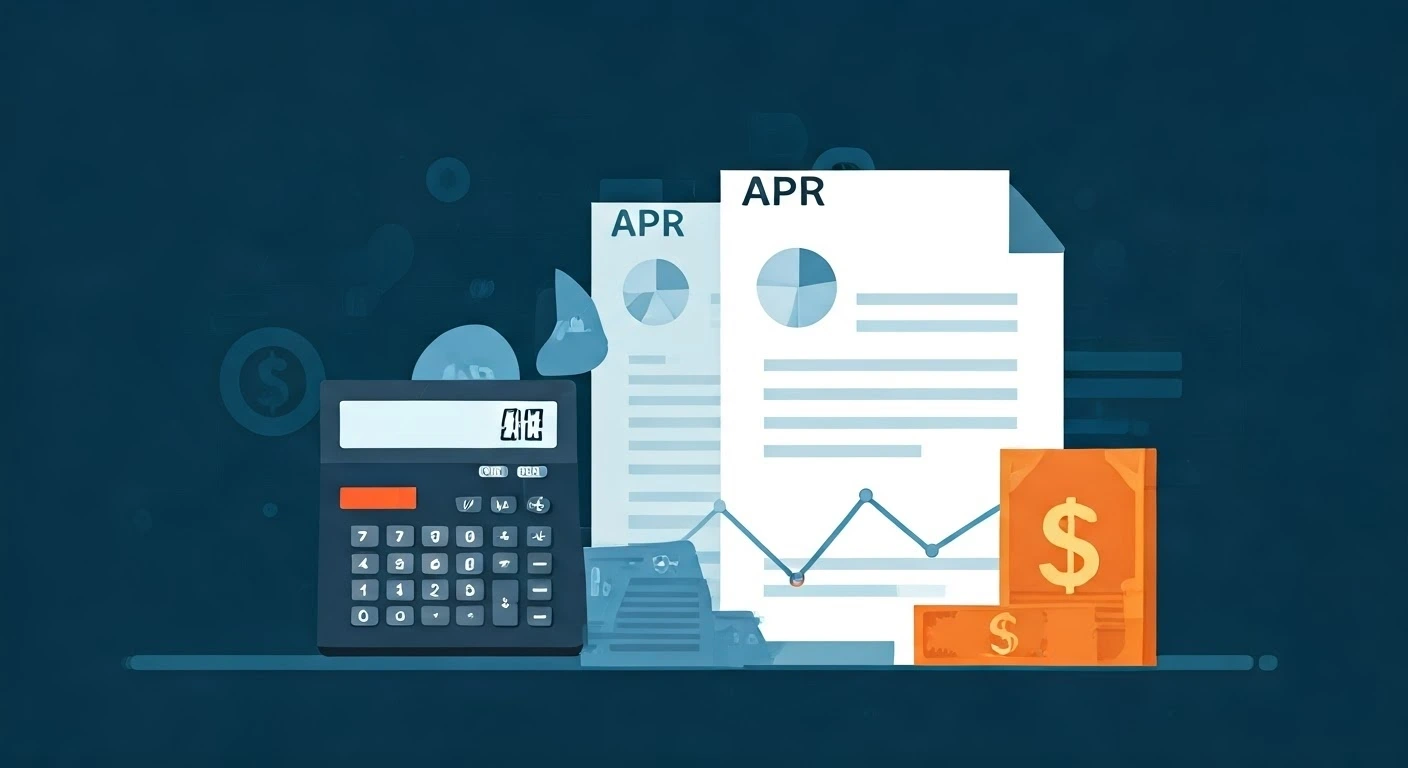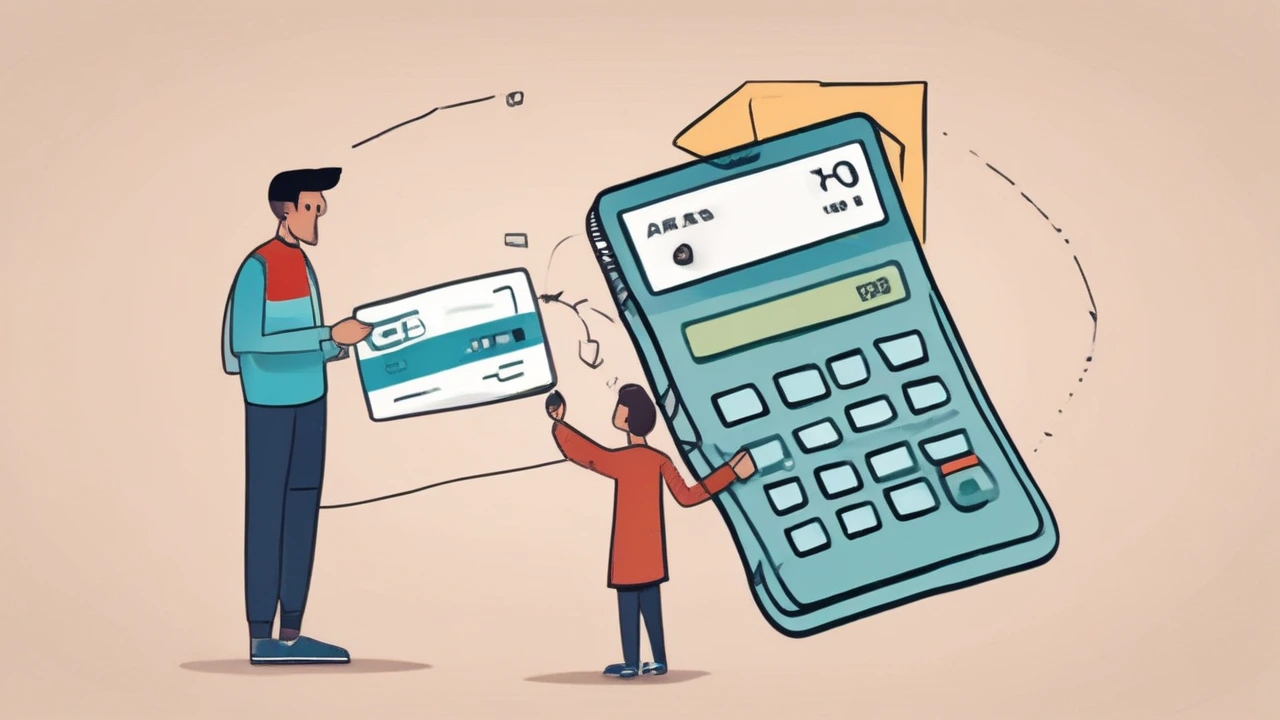By NexGen Support Team
January 20, 2025

In finance, it’s important to know key terms to make smart choices. One key term is the Annual Percentage Rate, or APR. What is APR? It shows how much it costs to borrow money as a yearly percentage. This is important when you get a loan, use a credit card, or think about investing. This guide will help you understand APR, why it matters, and how it affects your money. You will learn the APR calculation, fixed vs variable APRs, and APR vs interest rate. You’ll also get tips for dealing with loans with a high APR, which will help your financial management.
APR, which stands for Annual Percentage Rate, shows you the true cost of borrowing money. This not only includes interest but also any fees. It gives you a full-year view of what you will pay. Let us dive deeper to learn what is APR, its impact, and usage in more detail.
The Consumer Financial Protection Bureau (CFPB) says that the APR is more helpful for knowing the costs of borrowing than just the interest rate. The APR includes the interest you will pay and any fees tied to the loan. These fees can be origination fees, closing costs, or other charges. All this information helps you see the real cost of a loan.
Financial institutions use a specific method to calculate APR. This gives a clear way to show how much you will pay each year to borrow money. When you check the APR, you can compare different loan choices. This helps you make smart decisions that fit your financial goals.
The APR is key for borrowers. It impacts how much they can spend and how they plan their budgets each month. A lower rate helps them save money. On the other hand, investors benefit from a higher rate. A higher rate increases returns from savings accounts or CDs. Understanding the APR is important. It helps in making smart financial choices and planning for a better future.

Understand APR vs Interest rates to know your true cost of borrowing
People often mix up APR and interest rate, but they are not the same. The interest rate is the percentage you pay on the total loan amount. In contrast, APR tells you the complete cost of borrowing. It includes the interest rate along with any extra fees and charges linked to the loan.
When you look at credit card offers or pick a business loan, knowing this difference helps you spend your money smartly.
The interest rate is the percentage you pay on the loan amount. This is also known as the nominal interest rate. However, it does not include all the costs of borrowing. The annual percentage rate includes extra fees like closing costs and origination fees. This helps you better understand the true cost of borrowing.
The annual percentage rate tells you the actual interest rate on your loan. It shows the total amount you will pay for the loan over time. When comparing loan offers, focus on the APR. This is more useful than only looking at the nominal interest rate.
By understanding these terms, you can avoid financial issues. This knowledge helps you find a loan that works best for your needs and your budget.
To explain how APR differs from interest rates, let’s look at some real-life examples:
Here’s a comparison between two loan examples:
| Feature | Loan 1 (Interest Rate) | Loan 2 (APR) |
|---|---|---|
| Loan Principal Amount | $10,000 | $10,000 |
| Interest Rate | 5% | 5% |
| Fees | $0 | $200 |
| Total Interest | $500 | $500 |
| Total Loan Cost | $10,500 | $10,700 |
| APR | N/A | 7% |
Key Difference:
These examples show why APR matters in finance or loan decisions. It lets you see the total cost of borrowing, not just the interest rate
Interest rates are a key component. They matter, but they are not the only factor to consider. Other things, like closing costs, origination fees, and mortgage insurance, also affect your annual percentage rate. It gives you a complete view of the costs of borrowing. Interest rates only show part of the total costs.
The Annual Percentage Rate includes extra fees that raise your total borrowing costs. These extra fees can be:
When looking at loan offers, it’s important to ask about the fees and how they influence your APR. These fees can change a lot between lenders and impact your overall costs. If you know the different components, you can choose better loan options. This will help you get the best deal available.
Each part of the APR calculation affects how much you pay back and what you pay to borrow. Higher fees mean you will have to repay more. If your repayment term is longer, your monthly payments will be lower. But this also means you will end up paying more interest overall, increasing your borrowing costs.
Understanding these parts can help you make good money choices. Choosing a longer time for smaller payments might mean you pay more interest. By looking at how each part changes what you pay in total, you can make better choices for managing your money.
When you choose a loan, you should understand fixed and variable APR. A fixed rate stays the same throughout the loan term. This means your payments will stay steady. A variable rate can change based on market trends. This means that interest rates and payments can go up or down. Variable APRs are connected to indexes like the prime rate. This makes them harder to predict, even if they start lower than fixed APRs. Consider the risk of rising rates when you pick variable APRs, especially during times when interest rates are not stable.
Here’s a comparison between Fixed APR and Variable APR:
| Characteristic | Fixed APR | Variable APR |
|---|---|---|
| Interest Rate | Stays the same for the entire loan term. | Can change depending on market conditions. |
| Monthly Payments | Your payments remain consistent, making budgeting easy. | Payments can go up or down, which makes budgeting harder. |
| Financial Security | Provides peace of mind, especially when things are uncertain. | Less predictable; payments could increase unexpectedly. |
| Initial Rate | Might start a little higher than variable rates. | Usually starts lower but can rise over time. |
| Protection from Rising Rates | Shields you from future interest rate hikes. | You’re at the mercy of the market; rates can go up. |
| Best For | People who want simplicity and know exactly what to expect. | People who can handle changes and believe rates will drop. |
| This clearly outlines the differences and when each type of APR might be a good fit based on your financial goals and comfort with risk. | ||
APR calculation is simpler than it appears. You just need a few details. These include the loan amount, interest rate, loan fees, and loan term. This simple method allows you to understand and compare loans from different lenders more easily.
The Annual Percentage Rate calculation formula can feel confusing. But it helps you understand the yearly cost of borrowing money.
Here’s a simple look at the formula:
APR = [((Fees + Interest) ÷ Loan Amount) ÷ Number of Days in Loan Term] x 365 x 100
If the loan amount increases or if the interest rate goes up, the APR usually rises as well. This can make the loan more expensive. Adding fees, like closing costs or origination fees, also raises the cost of borrowing. This shows up as a higher APR.
Most of the time, you don’t have to figure out this rate on your own. You can find general APR calculators online to do this for you. Still, knowing the formula can help you understand loan offers more clearly. This way, you can compare different loans and make better borrowing choices.
Estimating your APR is simple with online tools. Just enter the loan amount, interest rate, and loan term. This will give you a quick estimate. Mortgage APR calculators also consider taxes and insurance to improve accuracy. Financial institutions offer special calculators. These help you compare options and make better choices.

While choosing loans, whether personal, mortgage or business loans or SBA loans - Find the APR
The interest rate of a loan is very important for your money. It can change how much you spend each month and the total cost of borrowing.
A higher APR means you will pay more money each month. It also means you will pay more total interest. This change has a bigger effect on larger loans or those with longer terms. For example, if the APR increases by just 0.5% on a $300,000 mortgage, you could end up paying several thousand dollars more in interest over 30 years.
A low interest rate can help lower your monthly payments and reduce the total cost of borrowing.
Choosing loans, whether personal, mortgage or business loans, or SBA loans, with a good APR, is very important. You should check that the loan term and the payments match your budget. This enables you to borrow wisely and manage your money better. Online calculators can help you with this.
High APR loans can make it tough to manage your money. You can make it easier by using smart ways to lessen their impact. A great way to save money over time is to work on lowering the APR of these loans.

Know the credit card APR and make the right choice
Understanding how APR is calculated for credit card is key for handling your debt. It helps you avoid high interest fees. Annual Percentage Rates can change based on your credit score and the kind of card you have. Look out for special offers with lower or even 0% rates. However, remember that these deals usually last for only a short time. Always read the terms carefully and plan ahead.
Both personal and business Credit cards may have different rates for each kind of transaction. It’s important to know these rates. They help you use your card wisely and stay away from extra fees.
The purchase APR is the interest rate for things you buy with your card. Cash advances come with a higher rate. They also have extra fees, so interest begins right away. Balance transfer rates are usually lower. These are good for paying off high-interest debt.
Getting a credit card with a low APR can save you a lot of money on interest charges, especially if you carry a balance.
A low APR is important because it seriously affects your financial health over time. Take your time to review your choices, and feel free to ask credit card companies for better offers. Actively looking for a low-APR credit card can lead to good savings in the long run.
The Truth in Lending Act (TILA) is important for fair and clear lending and protects people in the U.S. from unfair lending methods. The Consumer Financial Protection Bureau (CFPB) makes sure lenders follow TILA rules. This law requires lenders to share key details, such as the Annual Percentage Rate and fees, with borrowers in loan papers. It helps people understand the true cost of borrowing and easily compare loans and borrow wisely.
TILA also gives rules for how lenders should present credit terms. This way, lending is fairer for everyone. It aims to protect borrowers by ensuring they get clear and accurate loan information. It makes consumers to feel confident in their financial decisions, matching them to their needs and goals. TILA prevents misleading practices and helps consumers make smart choices. It also encourages good borrowing habits.
One problem with the annual percentage rate is that different lenders can calculate it in different ways. They may include interest and some fees, but they might miss other costs, like closing costs or origination fees. This makes it tough to compare offers properly. Because of this, people may not know the real cost of a loan or credit card. This can lead to unexpected extra costs for borrowers.
Understanding what is APR is important for making smart money choices. The Annual Percentage Rate is more than just the interest rate. It affects the total cost of borrowing money. When you know the difference between APR and interest rates, it helps you understand your loan better. Fees are a major part of the APR calculation and can change how much you pay for your loan. Handling loans with high rates can be tough. It takes planning to lessen financial stress. Knowing how fixed or variable rates work is good for your money plans. Remember, APR affects your monthly payments and the total interest you pay. Stay informed, look for options with low rates, and take charge of your finances.
Understanding APR is just one piece of the financial puzzle. At NexGen Taxes, we specialize in providing reliable taxation, accounting, and bookkeeping services to help you confidently manage your finances. Whether you’re navigating loan options, tracking expenses, or preparing for tax season, our team is here to ensure your financial records are accurate and organized.
We connect individuals, businesses, and nonprofits with licensed and experienced Tax Pros, EAs, and CPAs in the U.S. We handle the hard part of finding and vetting the right tax professionals so you have peace of mind while trusting them to do your taxes. Remember, on the NexGen Taxes platform, Tax Pros compete to earn your business, so you are the winner as a consumer. Get in touch with us today and see how filing taxes can be simplified.
It depends on the loan type you choose. A fixed APR stays the same for the entire loan term, as stated in the agreement. On the other hand, a variable rate can change due to market shifts. This type is often linked to benchmarks like the prime rate, which is generally about 3% higher than the federal rate. Make sure you know which APR applies to your loan before you sign.
They do not directly affect your credit score. But using your credit card smartly can help. If you pay your bills on time and keep your credit usage low, lenders may think highly of you. This can lead to better offers, like a lower APR, in the future.
Yes, you can avoid paying it on credit cards. To do this, pay your full balance during the grace period every month. Some cards also offer 0% introductory APR periods. This means you can avoid interest charges for a certain time.
APR shows you the real cost of your loan or credit. It takes into account both the interest rate and some fees. This means it shows the total cost of borrowing each year as a percentage of the amount you borrowed.
A 0% introductory APR means no interest for a period after opening the account. You borrow money for free. Pay off your balance before the offer ends to avoid high-interest charges later.
APR works differently for mortgages and car loans. For mortgages, APR includes interest, points, broker fees, and some closing costs. For car loans, APR usually only includes the interest rate without additional fees. The goal is to provide transparency in borrowing costs for consumers.
APR impacts monthly loan payments by determining the total cost of borrowing. A lower APR means lower monthly payments, while a higher APR results in higher monthly payments. Understanding the APR can help you make informed decisions about your finances and manage your budget effectively.
It means that every year, you will pay 24% on the money you owe on your credit card or loan. This number shows how much it costs to borrow money each year. It includes interest and some fees. These fees change the total amount you will need to pay back.
You can avoid APR fees by fully paying your credit card balance before the due date. If you do this during the grace period, you will not have to pay any interest on the purchases made in the billing cycle.
It is the cost of borrowing money, including interest and some fees. This rate is shown as a percentage of the loan amount. This percentage is an annual rate.
APR is the cost of borrowing money, like loans. APY means annual percentage yield. It shows how much interest you earn from savings accounts. APY considers compound interest. This helps you see more clearly how much you can earn from your deposits.
The common types are fixed, variable, introductory, and cash advance APR. A fixed rate stays the same. A variable rate can change as time goes on. Introductory rates give lower rates for a limited time. Cash advances usually come with higher rates.
A fixed APR remains the same throughout the loan term, providing stability in payments. On the other hand, a variable APR can fluctuate based on market conditions, potentially resulting in lower or higher payments over time. Understanding which type suits your financial situation is crucial when taking out a loan.
A “good” APR can vary based on the credit market and your credit score. A lower APR is better because it can help you save money on interest. If you have a good credit score, you are more likely to get offers with a lower APR.
Your APR can change for several reasons. These reasons include your credit score, the size of your loan, the length of your loan term, and the prime rate. Financial institutions look at your credit health and the market today to determine your rate.
You can lower your credit card rate by contacting your card issuer. This works well, especially if your credit score has improved. You might also think about balance transfers to cards with lower rates. Another option is to look for special offers that include lower starting rates.
When looking for low APR credit cards, compare offers from various issuers. Find cards with 0% intro APR. Consider annual fees, rewards, and perks that match your spending and goals. Research and reviews can help find the best low APR credit cards in the market.
It is the time during which you can pay your credit card balance in full without accruing any interest. It is usually between 21 to 25 days after the billing cycle ends. This period allows you to avoid paying interest on purchases if you clear your full balance within this timeframe.
The typical APR for personal loans in 2024 might be 9% to 12%, based on the economy and your credit. Lenders look at things like credit score, income, loan size, and repayment time to set the APR. It's smart to check different lenders to find the best rate for your finances.
© 2024 NexGen Unlimited, LLC